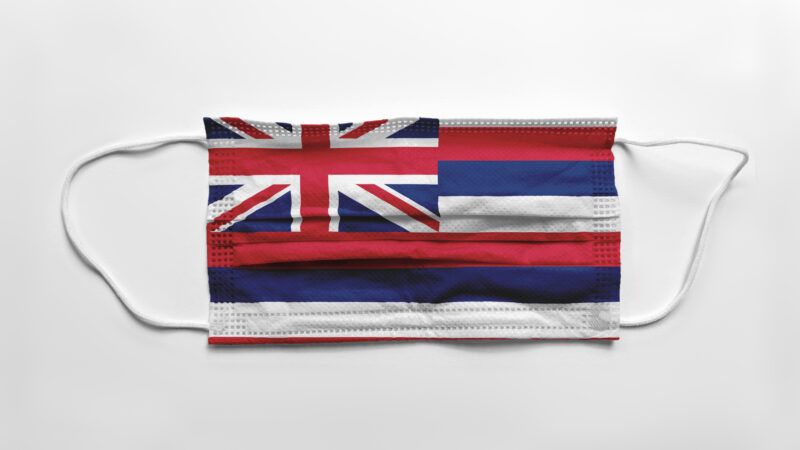Hawaii Limits Indoor Social Gatherings to 10 People. Will More States Follow Suit?
Hawaii Gov. David Ige issued an executive order yesterday imposing a raft of new restrictions on businesses and social gatherings.

Hawaii is bringing back a whole swath of pandemic restrictions on social gatherings and businesses in response to rising COVID-19 cases on the island.
On Tuesday, Hawaii Gov. David Ige, a Democrat, issued an executive order limiting indoor social gatherings to 10 people, and outdoor gatherings to 25 people. Restaurants, bars, and other "social establishments"—in addition to abiding by those gathering limits—must also require patrons to be seated and masked when not actively drinking or eating. Mingling between parties is expressly prohibited.
Indoor capacity at those establishments, as well as gyms and other "high-risk" activities, is limited to 50 percent. (It's not entirely clear to me whether this half-capacity cap supersedes the indoor gathering limits bars and restaurants are also supposed to comply with.)
"The dining rooms can only hold 50 [percent] capacity, where most restaurants and your financials are all structured around 100 [percent] capacity," said Hawaii Restaurant Association Executive Director Sheryl Matsuoka to Civil Beat. "You only have 50 [percent] of your income, but then you have to pay 100 [percent] of your bills."
Restaurants were already required to operate at 75 percent capacity, Matsuoka said.
Ige's executive order allows for "professional events"—which the Honolulu Star-Advertiser says includes weddings, meetings, banquets, and conventions—have to follow state and county rules regarding their operation, but not the new state gathering limits. Organizers also have to consult with counties when hosting an event with more than 50 people.
A dashboard run by the state's Emergency Management Agency shows that 65 percent of ICU beds in the state are occupied. The state has been averaging one COVID death a day for the past several months. Some 60 percent of Hawaiians are fully vaccinated, and almost 70 percent have received at least one shot.
Nevertheless, Civil Beat reported today that intensive care units (ICU) in a number of hospitals in the state are at or nearing capacity thanks to a surge in new COVID-19 patients. In Florida, a surge in delta variant cases has since been followed by a huge, and still rising, surge in COVID deaths. It's plausible the situation in Hawaii will get worse soon.
Thus far, most states and localities that have reimposed COVID restrictions have stuck to mandating indoor masking or requiring that patrons of restaurants and other establishments show proof of vaccination.
Hawaii's return to imposing limits on small gatherings—especially when statewide ICU capacity is still in good shape and COVID deaths are low—is a worrying sign that more states might soon start dredging up pandemic regulations we thought were behind us.
It doesn't appear Hawaii state officials have put much more thought into these restrictions since the last time they were imposed.
It's pretty widely accepted that requiring people to wear masks when entering a restaurant but not while they're sitting there talking and eating for an hour is useless. Limits on outdoor activities are also considered to be ineffective.
Likewise, imposing different limits on the size of gatherings depending on where they're happening doesn't appear to make much sense. Is a 40-person wedding really less dangerous than a restaurant patio filled with 30 people?
Ige's order is supposed to end on October 13, unless the governor chooses to extend it.
